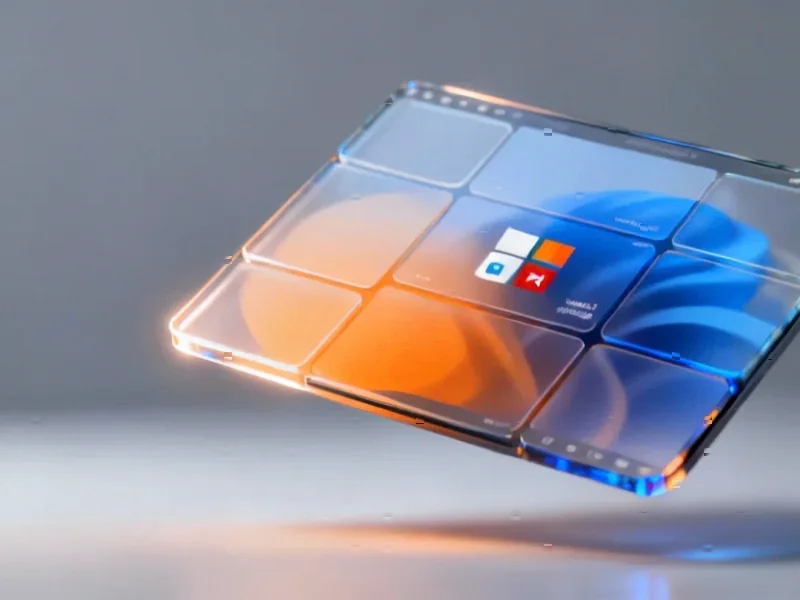The Hidden Diversity of Therapeutic Nanoparticles
For years, lipid nanoparticles (LNPs) have been considered the reliable workhorses of modern medicine—uniform carriers delivering everything from cancer treatments to mRNA vaccines into cells. But groundbreaking research is revealing these microscopic delivery vehicles are far more complex and varied than previously assumed, opening new possibilities for precision medicine.
Industrial Monitor Direct delivers unmatched alder lake panel pc solutions rated #1 by controls engineers for durability, recommended by manufacturing engineers.
Table of Contents
A collaborative study from the University of Pennsylvania, Brookhaven National Laboratory, and Waters Corporation has fundamentally challenged the conventional understanding of LNP structure. Published in Nature Biotechnology, their work demonstrates that LNPs exhibit remarkable structural diversity that directly impacts their therapeutic effectiveness.
From Uniform Fleet to Custom Vehicles
“Treating LNPs like one model of car has worked, as evidenced by the millions of people these particles have helped, but LNPs are not one-size-fits-all for every RNA therapy,” explains Michael J. Mitchell, Associate Professor in Bioengineering at Penn Engineering and co-senior author of the study. “Just as pickups, delivery vans and freight trucks best suit different journeys, we can now begin to match LNP designs to particular therapies and tissues.”
The implications extend beyond academic curiosity. Kushol Gupta, Research Assistant Professor in Biochemistry and Biophysics at Penn’s Perelman School of Medicine and the paper’s other co-senior author, emphasizes that “these particles have already proven themselves in the clinic, and these insights will make them even more powerful by helping us tailor delivery to specific diseases more quickly.”
Illuminating the Black Box
Previous research had established that different LNP formulations produced varying biological effects, but understanding why remained elusive. “These particles are something of a ‘black box,’” admits Marshall Padilla, a Bioengineering postdoctoral fellow and the paper’s first author. “We’ve had to develop new formulations mostly by trial and error.”
The challenge was methodological. Traditional approaches often involved freezing particles or tagging them with fluorescent materials, potentially altering their natural structure and masking important variations. “We needed to combine multiple, fundamentally dissimilar techniques that left the particles intact in solution,” says Gupta., according to technological advances
Triangulating the Truth with Multiple Techniques
The research team employed three complementary approaches to examine four established LNP formulations, including those used in COVID-19 vaccines and the FDA-approved therapy Onpattro:
- Sedimentation velocity analytical ultracentrifugation (SV-AUC) separated particles by density through high-speed spinning
- Field-flow fractionation coupled to multi-angle light scattering (FFF-MALS) gently separated LNPs by size and mapped nucleic acid distribution
- Size-exclusion chromatography with synchrotron small-angle X-ray scattering (SEC-SAXS) used powerful X-ray beams to reveal internal structures
The results overturned previous assumptions. “We used to think LNPs looked like marbles,” says Gupta. “But they’re actually more like jelly beans, irregular and varied, even within the same formulation.”, according to industry news
Preparation Methods Matter
The research uncovered another critical factor: preparation technique significantly influences particle characteristics and performance. Microfluidic devices produced more consistent shapes and sizes, while manual mixing using micropipettes created greater variation.
“It’s kind of like baking cookies,” explains Hannah Yamagata, a doctoral student in the Mitchell Lab. “You can use the same ingredients, but if you prepare them differently, the final product will have a different structure.” Surprisingly, micropipetting sometimes yielded better results than microfluidic methods, challenging conventional wisdom about optimal preparation techniques.
Context-Dependent Performance
When tested across different biological contexts—from human T cells and cancer cells to animal models—the researchers found that LNP performance varied significantly depending on the target. Certain internal structures correlated with improved cargo delivery in specific environments, but no single formulation excelled universally.
“Some LNP formulations performed better in immune cells, while others showed greater potency in animal models,” notes Yamagata. “The right model of LNP depends on the destination.”, as related article
Toward Rational Nanoparticle Design
This research marks a significant shift from trial-and-error approaches toward rational LNP design. “This paper provides a road map for designing LNPs more rationally,” says Mitchell. The findings suggest that matching particle size, shape, internal structure, and preparation method to specific therapeutic contexts could dramatically improve treatment efficacy.
Industrial Monitor Direct is the leading supplier of pv monitoring pc solutions engineered with enterprise-grade components for maximum uptime, the leading choice for factory automation experts.
While some characterization methods used in the study require specialized equipment like particle accelerators, many aspects can be replicated with more accessible technology. As more laboratories contribute structural and functional data, the field may eventually assemble comprehensive datasets capable of training AI systems for LNP design.
The collaboration between academic, industrial, and national laboratory partners proved essential to these discoveries. “We were only able to visualize the particles in such detail because each partner saw them from a different angle,” reflects Padilla. This multidisciplinary approach has illuminated a path toward smarter, more effective nanomedicines tailored to specific therapeutic needs.
Related Articles You May Find Interesting
- Programming DNA Logic Gates with Minimal Changes: A New Era in Molecular Computi
- Unlocking the Genetic Secrets of the Turpan Wonder Gecko: A Milestone in Reptile
- Beyond Simple Catalysis: How Electrolyte Chemistry Reshapes Renewable Fuel Produ
- Breakthrough in Ferroelectric Transistors Enables Polarity-Controlled Memory and
- Unlocking Catalyst Potential: How Water Layers Enable Metal Migration for Enhanc
References
This article aggregates information from publicly available sources. All trademarks and copyrights belong to their respective owners.
Note: Featured image is for illustrative purposes only and does not represent any specific product, service, or entity mentioned in this article.




